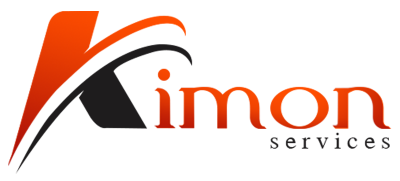In today’s hyper-competitive business landscape, productivity isn’t just about individual prowess but rather the synergistic output of a collective. The ancient adage, together we stand, divided we fall, has never been more pertinent, especially in the context of team dynamics in the modern workplace. Teams that master the art of collaboration often outpace, out-innovate, and outperform their competitors. But, what exactly underpins successful team collaboration? And how can organisations foster a culture where collective efforts amplify individual strengths? Welcome to our exploration of team collaboration strategies aimed at supercharging productivity.
The digital revolution has metamorphosed the way teams operate. From instant messaging to sophisticated project management tools, technology has bridged geographical divides, allowing global teams to operate as if they’re in the same room. However, with these advancements, new challenges have also arisen. Overcommunication, digital distractions, and the loss of personal touch can sometimes derail even the most tech-savvy teams. Thus, in the quest for increased productivity, it’s essential to strike a balance between leveraging technology and maintaining the human connection.
In this blog, we’ll delve deep into the strategies that top-performing teams employ to foster collaboration, ensuring not just efficiency but also fostering innovation and creativity. Whether you’re leading a team, part of one, or simply curious about how to make collaborative endeavours more fruitful, there’s something here for everyone. Let’s embark on this journey to unlock the true potential of teamwork and set the stage for unprecedented productivity gains.
Fundamentals of Effective Team Collaboration Techniques
Effective team collaboration strategies are the linchpin of high-performing companies, driving productivity and fostering innovation. Embracing these strategies necessitates a deep dive into the essence of team dynamics, allowing organisations to flourish by maximising the potential of every member. Below are paramount strategies to enhance team collaboration.
Goal-setting: Establishing Clear, Aligned Objectives
Clearly defined objectives are pivotal in cultivating team productivity. Every member should understand and align with the broader mission, ensuring their contributions are synergized with overall organisational goals. This is especially crucial for virtual teams where clarity in roles and objectives is the foundation of successful remote team collaboration. Establishing clear, quantifiable goals in alignment with team objectives amplifies group synergy and lays down a pathway to achieving cross-functional team success.
Feedback Mechanisms: Regular Loops and Open Channels
Regular feedback loops and open communication channels are integral components of effective team collaboration techniques. They facilitate real-time collaboration, allowing teams, especially agile ones, to adapt and evolve. These mechanisms promote trust-building in teams, overcoming barriers in both onsite and remote environments. By addressing concerns and acknowledging accomplishments, feedback mechanisms enhance team cohesion and motivation, fostering a culture of continuous improvement and learning.
Brainstorming Sessions: Encouraging Diverse Ideas and Creativity
Brainstorming is a potent tool for fostering team creativity and generating diverse ideas. These sessions should be inclusive and encourage every member to contribute, enhancing team dynamics and uncovering innovative solutions. In agile environments, group brainstorming can lead to the development of unique approaches and productivity hacks, enabling teams to navigate challenges effectively. Utilising collaboration tools during these sessions can significantly augment the productivity of both virtual and onsite teams.
Alignment: Ensuring Team Buy-in to Vision and Mission
Alignment is the backbone of team collaboration strategies, ensuring every member buys into the larger vision and mission. This requires clear inter-team communication and role clarity, allowing teams to move cohesively towards common objectives. Strategies for achieving alignment include regular alignment meetings and utilising collaboration platforms to maintain clear and open lines of communication. This is vital for both onsite and virtual teams, allowing them to overcome collaboration barriers and work in unison towards shared goals.
Agile and Cross-functional Strategies:
- Agile Collaboration: Maximising team productivity by adopting flexible and adaptive project management strategies, responsive to the evolving needs of the project.
- Cross-functional Teamwork: Integrating diverse skill sets and knowledge bases, ensuring comprehensive perspectives in problem-solving and decision-making.
Strategies for Successful Remote Team Collaboration
Team collaboration strategies prioritise trust as the cornerstone of successful remote teams. Virtual team strategies underscore the importance of fostering a culture characterised by openness, honesty, and respect. This is achieved through transparent communication, setting clear expectations, and consistently delivering on promises. Trust building in teams, especially remote ones, is pivotal in ensuring team cohesion. Implementing team feedback loops helps gauge sentiments and addresses issues promptly, contributing to increased trust.
| Trust-building Practices | Impact on Teams |
| Regular Check-ins | Enhances team dynamics and keeps members aligned |
| Celebrating Small Wins | Bolsters team motivation and morale |
| Transparent Decision Making | Reduces ambiguity and promotes role clarity |
Maximising Productivity in Agile Environments
Agile collaboration, when incorporated into team collaboration strategies, brings flexibility and adaptability, especially in remote settings. To maximise team productivity in agile environments, it’s vital to tailor agile methodologies to the nuances of remote work. This includes embracing collaboration platforms, ensuring real-time collaboration, and setting periodic team goal-setting sessions. Emphasising these aspects ensures cross-functional teamwork thrives, even in the virtual realm.
| Agile Methodologies | Impact on Remote Team Productivity |
| Sprint Planning | Enhances project management strategies and prioritises tasks |
| Daily Stand-ups | Facilitates inter-team communication and project updates |
| Retrospectives | Provides avenues for feedback and continuous improvement |
Tools for Enhancing Productivity and Collaboration
In today’s fast-paced business environment, team collaboration strategies lean heavily on utilising the best collaboration tools for productivity. These tools not only enhance team dynamics but also play a pivotal role in remote team collaboration.

| Tool | Functionality | Benefit for Teams |
| Slack | Real-time Messaging | Streamlines inter-team communication, fostering real-time collaboration |
| Trello | Task Management | Facilitates team alignment, ensuring every member is on the same page |
| Zoom | Video Conferencing | Supports virtual team strategies, enabling face-to-face interaction even in remote settings |
| Asana | Project Management | Bolsters project management strategies, ensuring seamless task tracking and team productivity |
Overcoming Collaboration Barriers with Technology
Overcoming team collaboration barriers, especially in virtual settings, requires a blend of effective team collaboration techniques and the right tools. One of the significant challenges in remote settings is communication. With the influx of collaborative methods, tools have emerged as the bridge to fill this gap.
- Unified Communication Platforms: Solutions like Microsoft Teams or Slack provide a unified platform for chat, calls, and video conferencing. This ensures efficient teamwork and reduces the hurdles of inter-team communication.
- Collaborative Document Editing: Tools like Google Docs or Microsoft Office 365 allow real-time collaboration on documents, fostering team creativity and group brainstorming without being in the same room.
- Feedback and Review Systems: Platforms like FeedbackFruits or Peergrade enable teams to provide constructive feedback in real time, strengthening the feedback loop in teams and ensuring continuous improvement.
- Task and Role Assignment: To improve team collaboration in virtual teams and offer role clarity, tools like Monday.com or Asana can be instrumental. These tools assist in team goal-setting, task assignment, and monitoring progress, ensuring every member knows their role and responsibility.
- Trust-building Virtual Team Activities: Platforms like Kahoot! or Icebreaker offer virtual team-building activities. Engaging in these can be a strategy for fostering trust in remote teams, a crucial component for team cohesion.
It’s worth noting that, with the rise of agile collaboration, tools that cater to agile environments, like Jira or Scrumwise, have seen a surge. They aid in maximising team productivity in agile environments, facilitating cross-functional teamwork and ensuring all project stages, from brainstorming to delivery, are optimised.
As businesses increasingly move towards virtual teams and remote work setups, the need for tools that can address and overcome collaboration barriers becomes paramount. By making informed decisions on the right collaboration platforms and software, teams can significantly improve their efficiency, productivity, and synergy, ensuring project success and a harmonious work environment.
Deep Dive to Enhancing Cohesion and Motivation
With the increasing shift towards virtual teams, team cohesion has become more crucial than ever. Cohesion drives productivity and ensures team alignment. Here are strategies to enhance it:
- Open Communication: Using collaboration tools like Slack or Microsoft Teams can enhance inter-team communication, promoting transparency and reducing misunderstandings.
- Regular Team-building Activities: Virtual team-building sessions, perhaps through platforms like TeamBonding or TinyCampfire, can bridge the physical gap and promote group synergy.
- Setting Clear Roles and Objectives: Team role clarity is vital. Utilise project management tools like Asana to clearly assign roles and tasks, ensuring everyone understands their responsibilities.
- Feedback Mechanisms: Create regular team feedback loops using tools such as Peergrade. This ensures that every member feels valued and has a platform to voice concerns.
- Trust Building in Teams: Develop trust through transparency and consistency. Regular check-ins, updates, and open-door policies can foster trust even in remote settings.
| Strategy | Tool/Method | Benefit |
| Communication | Slack, Microsoft Teams | Enhances transparency, reduces misunderstandings |
| Team-building | TeamBonding, TinyCampfire | Promotes group synergy, bridges physical gaps |
| Roles & Objectives | Asana | Provides team role clarity, streamlines tasks |
| Feedback | Peergrade | Makes members feel valued, provides voice to concerns |
| Trust | Regular Check-ins, Updates | Makes members feel valued, provides a voice to concerns |
Motivating Remote Teams
While cohesive teams can work harmoniously, motivation is the fuel that keeps the engine running. Remote team collaboration poses challenges in keeping spirits high. Here are tactics to ensure remote teams remain engaged:
- Flexible Working Hours: Recognizing the challenges of working from home, such as varied time zones or personal commitments, allows team members to choose their productive hours.
- Virtual Team Celebrations: Celebrate achievements, birthdays, or milestones virtually. Such gestures boost morale and team dynamics.
- Continuous Learning Opportunities: Offering online courses or training sessions ensures team members feel invested in. Platforms like Coursera or Udemy are perfect for this.
- Regular Feedback and Recognition: Recognizing efforts and achievements, even small ones, can significantly boost team motivation techniques. Platforms like Bonusly can aid in providing real-time recognition.
- Setting Clear Goals and Milestones: Team goal-setting can act as a roadmap. Tools like Monday.com can help track and celebrate these milestones, fostering a sense of achievement.
Strategies for Cross-Functional Team Success
Central to team collaboration strategies, cross-functional alignment ensures various departments synchronise their efforts for maximum efficiency. Key strategies include:
- Clear Objectives Setting: Utilise tools like Trello or Asana for team goal-setting, ensuring all units are moving towards the same direction.
- Inter-team Brainstorming Sessions: Encourage group brainstorming among different functions. This not only fosters team creativity but also ensures that everyone is on the same page.
- Role Clarity: Define clear roles using project management strategies. Tools like Monday.com can aid in setting clear functions and responsibilities, ensuring no overlaps or gaps.
The Power of Feedback in Cross-Functional Settings
A feedback loop in teams is a powerful tool. Especially in a cross-functional setup, open channels of communication are vital. This can be achieved through:
- Regular Review Meetings: Periodic meetings where different functions come together to provide feedback. Use collaboration platforms like Zoom for virtual teams.
- Real-time Collaboration Tools: Platforms like Slack or Teams facilitate real-time inter-team communication, immediately addressing concerns or sharing updates.
- Feedback Collection Platforms: Tools like FeedbackFruits can systematically collect and analyse feedback, driving continuous improvement.
Building Trust and Rapport:
Trust is the backbone of any collaborative effort, more so in cross-functional teamwork. For smooth operations, the following strategies are crucial:
- Transparency: Maintain open channels, share updates, and be transparent about challenges. Collaboration software like Confluence can help document processes and decisions.
- Regular Team Bonding Sessions: These could be formal sessions or casual virtual coffee breaks. They serve to build rapport and improve team dynamics, especially if the team operates remotely.
- Trust-building Activities: Engage in activities and exercises specifically designed for trust-building in teams. It can be as simple as sharing personal stories or more structured team-building events.
| Aspect | Tools/Methods | Purpose |
| Alignment | Trello, Asana | Goal-setting, synchronisation |
| Feedback | Zoom, Slack, FeedbackFruits | Open communication, continuous improvement |
| Trust | Confluence, Virtual Meetups | Building rapport, improving team dynamics |
Mastering the art of cross-functional collaboration demands a blend of clear communication, trust, and effective team collaboration techniques. Implementing agile collaboration tools can greatly enhance team productivity. The end game? A harmonised team, working seamlessly, overcoming team collaboration barriers, and collectively driving success.
Conclusion
In today’s fast-paced business environment, the pursuit of productivity is no longer just an objective; it’s essential. Boosting Productivity: Team Collaboration Strategies has shed light on the transformative power of cohesive team dynamics, and the tools and techniques that can supercharge a team’s output. We’ve discovered that it’s not solely about the hours invested or the resources at our disposal, but rather about the synergy of a unified team working in tandem towards shared objectives. By leveraging advanced collaboration tools and fostering an environment of trust and open communication, teams can overcome the challenges posed by remote setups and cross-functional divides.
The nuanced strategies presented emphasise that true productivity goes beyond mere task completion. It’s an intricate dance of alignment, motivation, feedback loops, and agility. When teams are aligned in their objectives and motivated by a shared vision, they produce work that’s not just completed but is also of superior quality. Furthermore, by championing open channels for feedback, organisations pave the way for continuous improvement, turning challenges into learning opportunities.
In conclusion, the era of siloed departments and isolated tasks is firmly in the rearview mirror. The future is collaborative, agile, and interconnected. By embracing the team collaboration strategies highlighted in this blog, businesses stand to not only boost their productivity but also cultivate a culture where innovation thrives, and success is a collective triumph.
FAQs
What are the best team collaboration strategies?
The best team collaboration strategies include clear communication, setting defined roles and responsibilities, regular team meetings, encouraging open feedback, and utilising collaboration tools. Establishing a shared vision and creating a culture of trust and mutual respect are also crucial.
How can you improve team productivity?
To improve team productivity, one can set clear expectations, provide the necessary resources and tools, offer regular training, recognize and reward achievements, and encourage breaks to prevent burnout. Regular feedback and maintaining a positive team culture can also help.
What tools are essential for team collaboration?
Essential tools for team collaboration include communication platforms like Slack or Microsoft Teams, project management tools like Trello or Asana, document-sharing platforms like Google Drive or Dropbox, and video conferencing tools like Zoom or Teams.
How do you handle collaboration in remote teams?
Handling collaboration in remote teams involves using digital communication tools, setting clear expectations, having regular check-ins and virtual meetings, ensuring all team members have access to necessary resources, and fostering a culture of trust and transparency.
How to foster trust in virtual teams?
To foster trust in virtual teams, ensure open and consistent communication, set clear expectations, provide regular feedback, recognize achievements, and create opportunities for team members to connect on a personal level, such as through virtual team-building activities.
What are agile collaboration techniques?
Agile collaboration techniques include daily stand-ups, sprint planning, sprint reviews, and retrospectives. Continuous integration, paired programming, and maintaining a product backlog are also integral to the agile methodology.
How to manage cross-functional team collaboration?
Managing cross-functional team collaboration requires setting clear roles and responsibilities, facilitating regular communication, understanding each team’s strengths and limitations, and using collaboration tools to keep everyone on the same page. Celebrating shared successes can also boost morale.
How to improve team communication in projects?
To improve team communication in projects, establish clear communication channels, hold regular status updates, ensure all members understand project goals, use visual aids like charts or diagrams, and encourage open feedback and questions.
What are the steps to ensure team alignment?
To ensure team alignment, first define and communicate a clear vision and goals. Then, foster open communication, regularly check in on progress, provide training as needed, and always ensure that feedback is both given and received.
What methods can enhance team brainstorming?
Methods to enhance team brainstorming include setting clear objectives for the session, encouraging participation from all members, using brainstorming tools or software, allowing for individual ideation before group sessions, and creating a safe space where all ideas are valued.






